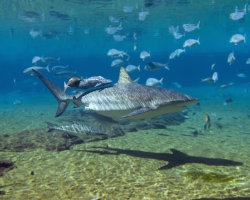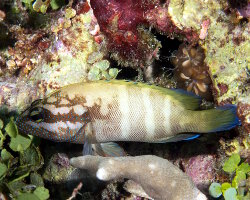Sealife guideThe southern right whaleEubalaena australis
Last updated on 08/26/2024 at 05:46 PM
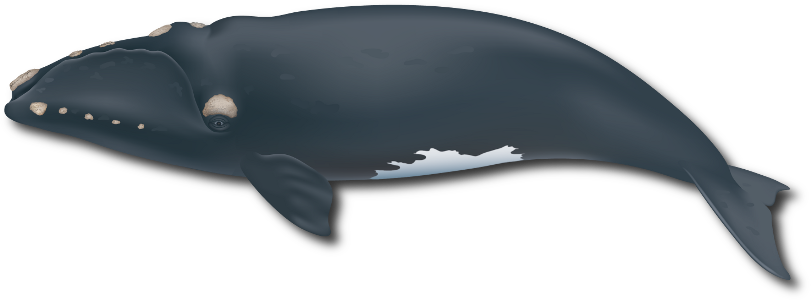
The southern right whale (Eubalaena australis) © Uko Gorter
Taxonomy
- Common name: Southern right whale
- French name: Baleine franche australe, baleine noire australe
- Spanish name: Ballena franca austral
- Scientific name: Eubalaena australis (Desmoulins, 1822)
- Family name: Balaenidae
- Order name: Cetacea
- Class name: Sea mammals [Mammalia]
Description
The southern right whale is a marine mammal belonging to the order of baleen whales. Measuring around 56 feet in length, the southern right whale ranks among the top five largest baleen whales.
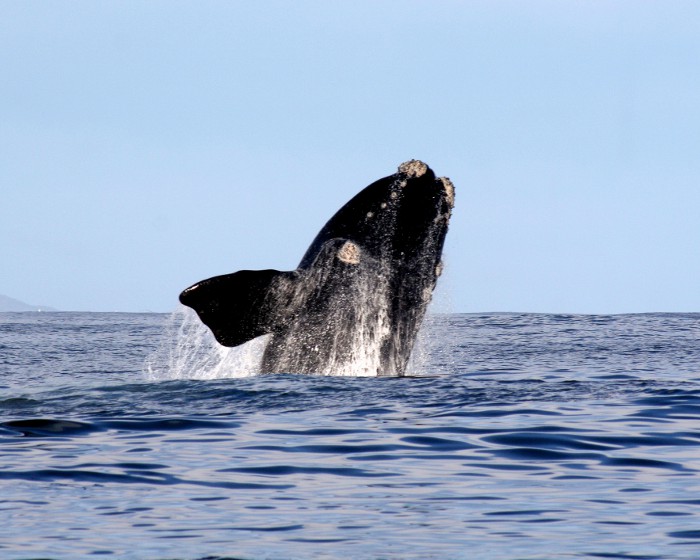
The southern right whale sometimes breaches at the surface of the water.
The southern right whale has a stout, black body, sometimes with a white patch on its underside. It is distinguished by the absence of a dorsal fin, short paddle-shaped pectoral fins, and whitish callosities on its head, which are home to various marine organisms, primarily parasitic crustaceans.
Geographic range
The southern right whale migrates from the waters of the Antarctic ocean to the coasts of Africa, South America, New Zealand, and Australia, staying there between May and October before returning. It primarily inhabits the Antarctic ocean but is also found in the southern Pacific and Indian oceans.
Habitat
This pelagic marine mammal is typically found offshore in open waters.
Diet
The southern right whale primarily feeds on krill and copepods, small pelagic
crustaceans suspended in the water which are abundant in the Antarctic ocean.
Reproduction
The southern right whale migrates to warmer waters near the southern Australian coast to give birth and nurse its calf. Weighing nearly 2,200 pounds at birth and measuring 16 feet long, the southern right whale can grow to 176,000 pounds and 56 feet as an adult.
At birth, the calf is guided to the surface for its first breath. Initially black and white, it eventually turns black. It has a small fat reserve, insufficient for survival in the cold waters of the Antarctic Ocean. The calf gains about 200 pounds per day and stays close to its mother until it is about one year old. Females give birth to one calf every three years, with a gestation period of about a year.
Did you know ?
The southern right whale has been on the
IUCN Red List of Threatened Species since 1988. Initially listed as « vulnerable » it has been classified as of « least concern » since 2013. Despite this, the situation remains concerning, with the global population having declined from 100,000 to around 3,000 whales today.
Southern right whales were hunted for their thick blubber and ease of capture, as they swam close to the Australian coast and floated when dead. However, they were protected in South Australia in 1931 and internationally in 1935.
Like human fingerprints, the whitish callosities on the head of the southern right whale form unique patterns that allow scientists to identify each individual.
The Aboriginal people living along the southern Australian coast have incorporated whales into their myths, passed down through generations, such as « Kondole the whale », a powerful man who possessed fire and, when struck by a spear, ran into the sea and transformed into a whale. Water spouted from his neck wound, becoming the whale's blowhole.
Tips for observing
The southern right whale is a marine mammal that must regularly surface to breathe, offering many opportunities to observe it.
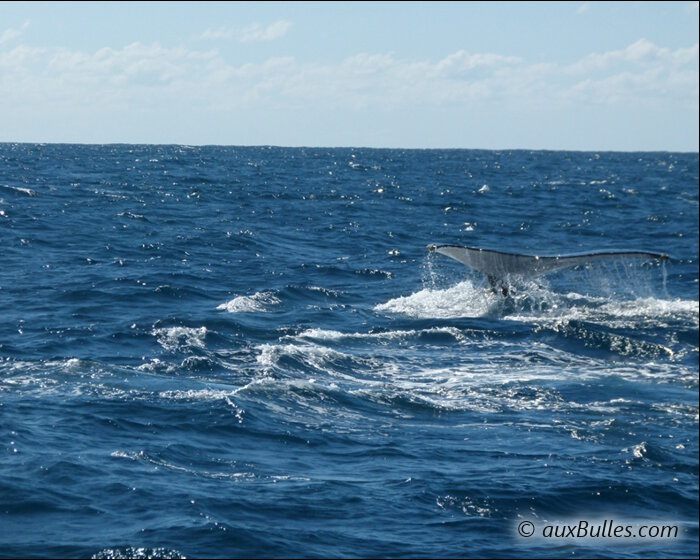
The magical moment when the southern right whale's tail appears above the water's surface !
« Whale watching » is the art of observing whales in their natural habitat, but the challenge lies in finding the ideal observation point ! So, I invite you to discover
where to see whales in Australia.
Discover also
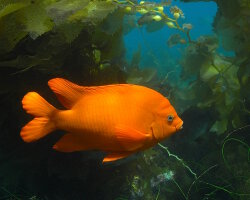
Garibaldi
(Hypsypops rubicundus)

Gilt-head sea bream
(Sparus aurata)
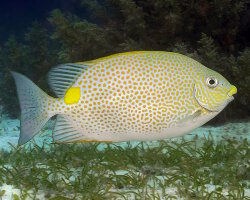
Goldlined spinefoot
(Siganus guttatus)
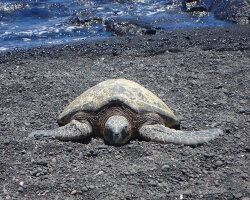
Kemp's ridley sea turtle
(Lepidochelys kempii)

Pinktail triggerfish
(Melichthys vidua)
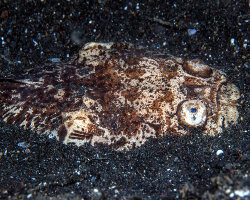
Reticulate stargazer
(Dactyloscopus foraminosus)

Royal dottyback
(Pictichromis paccagnellorum)
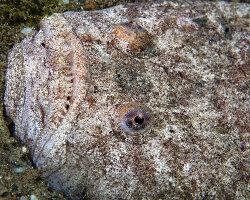
Star gazer
(Uranoscopus scaber)
The marine species from Australia
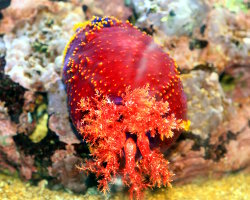
Australian sea apple
(Pseudocolochirus axiologus)

Australian spiny gurnard
(Lepidotrigla papilio)

Big-belly seahorse
(Hippocampus abdominalis)
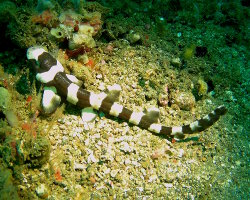
Brownbanded bamboo shark
(Chiloscyllium punctatum)
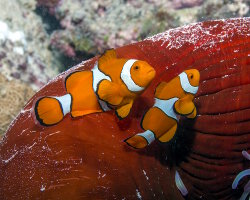
Eastern clown anemonefish
(Amphiprion percula)
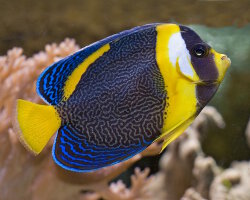
Scribbled angelfish
(Chaetodontoplus duboulayi)
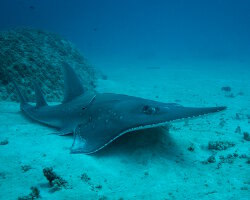
White spotted wedgefish
(Rhynchobatus australiae)

Yellowfin bream
(Acanthopagrus australis)





















